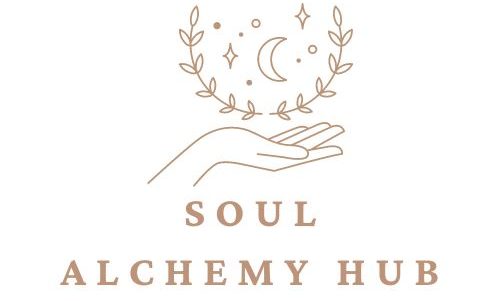Are you looking for a natural and effective way to improve your overall well-being? Look no further than holistic healing! As a beginner, the world of holistic healing may seem overwhelming, but I promise it’s not. With this beginner’s guide, you can learn about the basics of holistic healing, various techniques and methods, and start your journey towards a healthier and more balanced life.
Key Takeaways:
- Holistic healing is a natural and effective way to improve your overall well-being.
- This beginner’s guide will introduce you to the basics of holistic healing, various techniques and methods.
- By incorporating holistic healing into your life, you can start your journey towards a healthier and more balanced life.
Understanding Holistic Healing
As a beginner to holistic healing, it’s important to understand the basics of this approach to wellness. Holistic healing is founded on the idea that health is not solely determined by the physical body, but also by the mind and spirit. It considers each individual as a whole, rather than simply treating specific symptoms or ailments.
By adopting a holistic approach, we acknowledge that our overall well-being is interconnected and that we need to nurture all aspects of ourselves to achieve optimal health.
One of the key tenets of holistic healing is the mind-body-spirit connection, which recognizes that our thoughts and emotions can impact our physical health. By addressing the root causes of physical ailments, such as stress or negative thought patterns, we can positively influence our health and well-being.
As a beginner to holistic healing, it’s important to approach this practice with an open mind and a willingness to learn and grow. By embracing a holistic approach to wellness, we can enhance our physical, mental, and spiritual health and lead a more balanced and fulfilling life.
Holistic Healing Techniques for Beginners
When starting on a holistic healing journey, it can be overwhelming to choose from the various practices available. Here are some beginner-friendly holistic healing practices that you might find suitable for your needs:
- Meditation: This practice involves focusing your attention on the present moment, allowing your mind to become calm and serene. Find a quiet place where you feel comfortable and focus on your breath, or use guided meditation videos to get started.
- Yoga: This practice combines physical postures, breath control, and meditation to improve flexibility, reduce stress, and promote overall wellness. Join a beginner’s yoga class or follow an online tutorial to get started.
- Acupuncture: This practice involves inserting fine needles into specific points on the body to promote the flow of energy and relieve pain. Look for a certified practitioner in your area to get started.
- Aromatherapy: This practice involves using essential oils to promote relaxation, improve mood, and alleviate physical ailments. Use a diffuser or add a few drops of essential oil to your bath or massage oil to experience the benefits.
Remember that every individual is unique, and what works for one person might not work for another. Experiment with different practices and see what resonates with you.
Holistic Healing Techniques for Beginners: Tips for Getting Started
When starting with holistic healing techniques for the first time, it’s important to keep these tips in mind:
- Start with a single practice and build from there. Trying to incorporate too many practices at once can be overwhelming and unsustainable.
- Be patient and stay consistent. Results from holistic healing practices may take time to manifest, so it’s important to stay committed to your routine.
- Be open-minded and willing to try new things. Holistic healing is about exploring different approaches to wellness, so don’t be afraid to step outside of your comfort zone.
By incorporating these beginner-friendly holistic healing practices into your routine, you can start your journey towards a more balanced and healthier life.
Exploring Holistic Healing Methods
When it comes to holistic healing, there are various methods that one can explore. Each method offers unique benefits for physical, emotional, and spiritual well-being. Here are three popular holistic healing methods that beginners can try:
| Method | Description | How to Get Started |
|---|---|---|
| Herbal Medicine | Herbal medicine uses plants and plant-based extracts to promote healing and wellness. It has been used for centuries and is still widely practiced today. | Research different herbs and their benefits, and consult a qualified herbalist or naturopath for guidance. Start with simple herbal teas or supplements. |
| Energy Healing | Energy healing involves the manipulation of the body’s energy field to restore balance and promote healing. It can be done through touch or from a distance. | Find a qualified energy healer or explore techniques such as Reiki or Qigong. Practice energy healing on yourself through visualization and intention-setting. |
| Sound Therapy | Sound therapy uses sound vibrations to promote healing and relaxation. It can involve listening to music, chanting, or using sound bowls. | Explore different types of sound therapy, such as binaural beats or chakra balancing music. Attend a sound healing workshop or incorporate sound therapy into your meditation practice. |
“Holistic healing methods offer a gentle yet powerful way to enhance well-being and promote healing. By incorporating a variety of methods that resonate with you, you can create a personalized healing journey that supports your overall health and happiness.”
Remember that each individual’s healing journey is unique, and what works for one person may not work for another. It’s important to stay open-minded and explore different methods until you find what works best for you. By incorporating holistic healing into your daily routine, you can enhance your physical, emotional, and spiritual well-being for a lifetime of wellness.
The Benefits of Holistic Healing for Beginners
As a beginner in the world of holistic healing, you may be wondering what benefits it can offer. The truth is, there are countless benefits to embracing a holistic approach to health and wellness.
One of the main benefits of holistic healing is its focus on treating the whole person, not just specific symptoms. This means that by addressing underlying issues and imbalances, holistic healing can lead to long-term healing and wellness.
Holistic healing can also help reduce stress and promote relaxation. Practices such as meditation, yoga, and aromatherapy can help calm the mind and reduce feelings of anxiety and overwhelm.
Another benefit is improved physical health. Holistic healing methods such as acupuncture, herbal medicine, and energy healing can help alleviate pain, improve immune function, and promote overall well-being.
Finally, holistic healing can enhance mental clarity and promote spiritual growth. By cultivating a deeper connection with oneself and the world around us, we can gain a greater sense of purpose and fulfillment.
By embracing holistic healing as a beginner, you can reap these benefits and embark on a journey towards optimal health and wellness.
Creating a Holistic Wellness Routine
If you’re new to holistic healing, the idea of creating a wellness routine may seem like a daunting task. But fear not, a holistic wellness routine is all about finding balance and incorporating practices that nourish your mind, body, and spirit. Here are some tips to help you get started:
- Set intentions: Before you start incorporating different practices into your routine, take a moment to set an intention. What do you hope to achieve through holistic healing? What areas of your life do you want to improve? Keeping your intentions in mind will help you stay focused and motivated.
- Choose suitable practices: There are countless holistic healing practices out there, but not all of them will be suitable for you. Experiment with different practices and see what resonates with you. Some beginner-friendly practices to consider include meditation, yoga, and aromatherapy.
- Establish a balanced routine: Your holistic wellness routine should be well-rounded and balanced. This means incorporating practices that nourish your mind, body, and spirit. For example, you might start your day with meditation, practice yoga in the afternoon, and wind down with an aromatherapy session before bed.
Creating a holistic wellness routine is all about finding what works for you. Be open to trying new practices and don’t be afraid to make adjustments along the way.
Nourishing the Body Through Holistic Nutrition
As a beginner in holistic healing, one of the essential elements to consider is holistic nutrition. Holistic nutrition is all about nourishing the body with whole, natural foods that promote optimal health and wellness.
The food we eat plays a significant role in our physical, emotional, and mental well-being. Therefore, it’s crucial to pay attention to what we consume and make wise choices to support our overall health.
Here are some easy holistic healing tips for beginners to incorporate into their daily routine:
- Choose whole, unprocessed foods: Whole foods such as vegetables, fruits, whole grains, and lean proteins are packed with vital nutrients that nourish the body. Avoid processed, packaged foods with added preservatives, chemicals, and sugar.
- Eat mindfully: Take the time to enjoy your meals and savor each bite. Chew your food thoroughly and pay attention to the flavors and textures. This will help you to feel more satisfied and prevent overeating.
- Hydrate with water: Drinking enough water is crucial for optimal health. It helps to regulate body temperature, aid digestion, flush out toxins, and keep the skin healthy. Aim to drink at least 8 glasses of water a day.
- Incorporate healthy fats: Healthy fats found in foods such as avocados, nuts, seeds, and oily fish are essential for brain health, hormone regulation, and maintaining healthy skin.
- Limit caffeine and alcohol: While caffeine and alcohol can be enjoyed in moderation, they can also disrupt sleep, increase anxiety, and affect mood. Limiting these substances can lead to better overall health.
By incorporating these easy holistic healing tips for beginners into your daily routine, you’ll be taking a significant step towards a healthier, more balanced life.
Enhancing Mental Well-being with Holistic Approaches
When it comes to holistic healing techniques for beginners, mental well-being is an essential aspect that cannot be overlooked. As I mentioned earlier, holistic healing considers the mind, body, and spirit as interconnected parts of a whole. Therefore, taking care of the mind is just as important as taking care of the body.
Exploring Mindfulness
Mindfulness is a popular holistic approach that involves being present in the moment and observing thoughts without judgment. It can help to reduce stress, anxiety, and depression while promoting a sense of calm and inner peace. To get started with mindfulness, find a quiet space, sit comfortably, and focus on your breath. When your mind starts to wander, gently bring your attention back to your breath.
Journaling for Self-Reflection
Journaling is a powerful tool for self-reflection and personal growth. It can help to clarify thoughts and emotions, promote self-awareness, and reduce stress. To start journaling, set aside a few minutes each day to write down your thoughts, feelings, and experiences. You can also use prompts to guide your writing, such as “What am I grateful for today?” or “What are my goals for the week?”
Using Affirmations for Positive Self-Talk
Affirmations are positive statements that can help to reprogram negative self-talk and promote self-confidence. To create your own affirmations, think of a positive quality or attribute you want to cultivate, such as “I am strong” or “I am worthy of love and respect.” Repeat your affirmations to yourself daily, either silently or out loud.
By incorporating these holistic approaches into your wellness routine, you can enhance your mental well-being and improve your overall quality of life.
Exploring Holistic Healing in Daily Life
As a newcomer to holistic healing, incorporating it into daily life may seem daunting. However, with the right mindset and approach, it’s easier than you think. Here are some simple yet effective techniques to help you get started:
1. Create a Tranquil Home Environment
Our surroundings can heavily impact our mood and well-being. To create a calming atmosphere at home, consider incorporating natural elements such as plants, essential oils, and soft lighting. Declutter your space and remove any sources of stress, such as technology or work-related materials, from your bedroom.
2. Practice Self-Care
Self-care is essential for maintaining a healthy mind and body. Make time for activities that bring you joy, such as reading, meditation, or taking a warm bath. Prioritize getting enough sleep, staying hydrated, and nourishing your body with whole foods.
3. Find Balance Amidst Modern Life
In our fast-paced world, finding balance can be a challenge. Consider incorporating mindfulness techniques, such as deep breathing, into your daily routine to reduce stress and anxiety. Practice setting boundaries and saying no to commitments that do not serve you.
By incorporating these simple techniques into your daily routine, you can begin to experience the benefits of holistic healing in your life.
Seeking Professional Guidance in Holistic Healing
As a beginner in holistic healing, it can be challenging to know where to start or how to progress. Seeking professional guidance can be incredibly beneficial for your journey towards wellness. Here are some tips to help you find qualified practitioners and make the most of their expertise:
- Do your research: Look for practitioners who are certified in their area of expertise and have positive reviews or referrals from other clients.
- Ask questions: Before booking an appointment, don’t be afraid to ask questions about the practitioner’s experience, approach, and success rate with clients.
- Collaborate: Holistic healing is a collaborative process between the practitioner and the client. Be open and honest about your health history, concerns, and goals.
- Utilize their expertise: Practitioners can offer a wealth of knowledge on various holistic healing methods and techniques. Don’t be afraid to ask for recommendations or guidance on how to integrate these practices into your daily life.
Remember, finding the right practitioner is a personal journey and may require some trial and error. Don’t be discouraged if the first practitioner you visit doesn’t feel like the right fit. Keep searching until you find someone who aligns with your goals and values.
Holistic Healing: A Lifelong Journey
As I’ve discussed throughout this article, holistic healing is not a quick fix, but rather a journey towards improved physical, mental, and emotional well-being. It’s important to remember that everyone’s healing journey is unique and there is no one-size-fits-all approach to holistic healing.
Exploring different holistic healing methods, incorporating self-care practices into daily life, and seeking guidance from qualified practitioners are all important steps towards holistic wellness. However, it’s also important to approach this journey with an open mind and a willingness to learn and grow.
As we continue on our holistic healing journey, we may encounter challenges and setbacks, but it’s important to stay committed and persistent in our efforts. Remember to prioritize self-care, nourish your body with wholesome foods, and practice techniques that promote mental clarity and emotional balance.
Ultimately, holistic healing is not just about the practices we engage in, but also about the mindset we cultivate towards our own well-being. By embracing a holistic approach to health, we can create a more balanced and fulfilling life for ourselves.
Conclusion
In conclusion, holistic healing is a powerful and transformative approach to wellness that can benefit beginners in countless ways. By understanding the mind-body-spirit connection and embracing a whole-person approach to health, you can incorporate a range of beginner-friendly holistic healing techniques and methods into your daily routine. From meditation and yoga to energy healing and sound therapy, there are many ways to enhance your well-being and promote mental clarity, reduce stress, and improve physical health.
Creating a holistic wellness routine requires effort and commitment, but the rewards are well worth it. By nourishing your body with whole foods, focusing on mental well-being through mindfulness practices and affirmations, and incorporating calming and rejuvenating practices into your daily life, you can experience profound shifts in your overall health and well-being.
As you begin your holistic healing journey, it is important to remember that it is a lifelong process rather than a quick fix. By seeking professional guidance, staying open to growth and self-discovery, and embracing the ups and downs of the journey, you can create a more balanced and healthier life that supports your well-being on all levels. So take the first step today and start exploring the world of holistic healing – your mind, body, and spirit will thank you.






